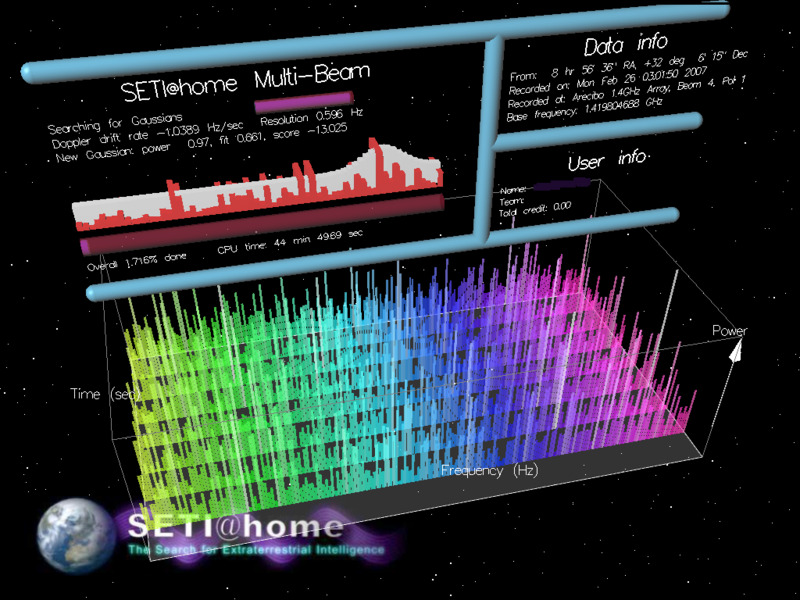
A new citizen-science project will improve the chances of finding ET
EVER since 1993, when funding from America’s space agency, NASA, was cut, the Search for Extraterrestrial Intelligence (SETI), which scans the sky looking for radio signals from intelligent aliens, has been inventive in its methods. In particular, it was one of the pioneers of the field of “citizen science”, in which interested amateurs are recruited to help professionals crunch data. In 1999 it started SETI@home, an application that uses spare processing power on volunteers’ computers to sift the information generated by its radio telescopes. These days, SETI@home boasts more than 1m users.
On February 29th the SETI Institute launched another citizen-science project. This time, though, its researchers are less interested in the digital computers on volunteers’ desks than in the biological ones between their ears. SETILive, as the project is called, hopes to use the pattern-recognition capabilities of brains to distinguish interesting signals from the cacophony of interference generated by the denizens of planet Earth—and to do so in real time.
The basic idea behind SETI is to look for distinctive radio-frequency emissions that might come from advanced aliens rather than natural sources like stars. To do this, the SETI Institute uses an instrument called the Allen Telescope Array—a group of 42 small radio-telescope dishes in California, partly paid for by the eponymous co-founder of Microsoft.
Unfortunately, some parts of the radio spectrum are full of signals created by Earthlings, rather than aliens. Everything from passing satellites and tumbling space junk to ground-based radar and even the ignition systems of nearby cars can generate spurious radio waves that confuse the software. Until now, the project has dealt with that by ignoring the more crowded bits of the spectrum. But SETILive will bring them into play.
It will do so by feeding pictorial representations (known as waterfall plots) of data from these noisy chunks of the spectrum to its users in the hope that they will be able to filter out the noise and spot potentially interesting signals buried behind the radio clutter from Earth. Those interesting signals will not necessarily have come from alien civilisations, says Chris Lintott, an astrophysicist at Oxford University who helps to run Zooniverse, a citizen-science website that manages several projects, including SETILive. But even if they do not, some new astronomical phenomena may be discovered by the project. And as the various sources of interference become better characterised, the results will be fed back into the automated-search algorithms, improving their ability to deal with Earth-generated noise.
Other citizen-science projects already use the superior pattern-recognition capabilities of human “wetware”, but SETILive is different from these in one important way. Rather than having its users pore at leisure over stored data, aliens are hunted on the fly. Users logging on to the project’s website view information that is hot from the Allen Array. They have to work quickly, though. Every 90 seconds, the array switches to looking at a different star, or a different frequency range, and a new image is generated.







